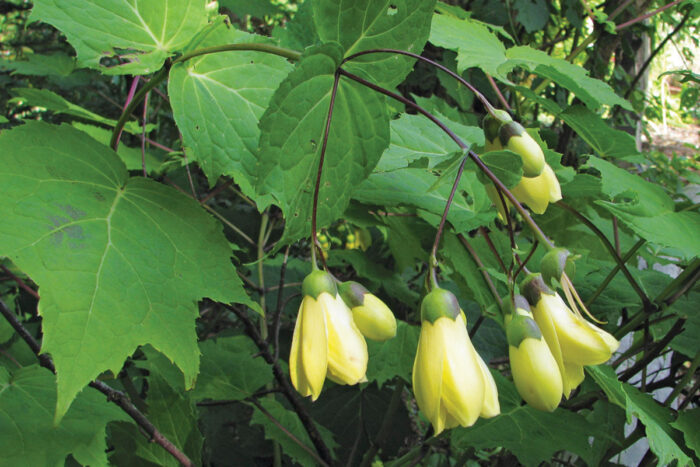
Finding plants that flourish in the shade isn’t the challenge. Anyone can find a flock of ferns or a herd of hostas to turn their shade garden into a green sea of sameness. The challenge arises when you start expecting more from those shady spots. You have to first find bold plants that thrive in partial or full shade, and then incorporate these show-stoppers in a cohesive way. It may take a little more thought and creativity to design a successful shade garden, but who ever complained about spending extra hours toiling in the cool comfort of the shade?
If it’s time to transform those dark corners of your garden, we’ve knocked the first step out of the way for you. Whether you’re a sucker for bright blooms, or unique foliage is more your style, you’ll find the perfect bold shade plant for your Northeast garden below.
1. ‘Britt-Marie Crawford’ Ligularia

Name: Ligularia dentata ‘Britt-Marie Crawford’
USDA Hardiness Zones: 4 to 9
Size: 3 to 4 feet tall and wide
Conditions: Full sun to partial shade; consistently moist soil
Here is a plant with large glossy, dark chocolate-red leaves that hold their color all summer. The tops of the leaves are purple, too, unlike the older cultivars of L. dentata. It was originally found in Scotland by Britt-Marie Crawford in a patch of ‘Othello’ (Ligularia dentata ‘Othello’, Zones 3–9). Its bright, golden-orange flowers on dark stems create beautiful contrast in summer. This plant will grow in partial shade, or in full sun in our northern climate, but it appreciates a bit of afternoon shade. A rich soil will help it reach its full potential.
2. Umbrella Plant

Name: Darmera peltata
Zones: 5 to 9
Size: 2 to 4 feet tall, 3 to 5 feet wide
Conditions: Full to partial shade; consistently moist soil
This northwestern U.S. native starts the season sending up its flowers before the leaves. The flowers present an odd sort of beauty, stiff bare stems holding light pink flowers. Then comes the fantastic foliage. The glossy, large leaves, 8 to 12 inches across, are cupped, so the upright ones hold water. Sited in moist soil, this will grow into a large plant. Though it usually is grown in shade, the best-looking umbrella plant I ever saw was in full sun, surrounded by white stones—the soil under it must have been great. The seeds of umbrella plant are smaller than a grain of salt. If you are trying to collect seeds and miss them in the pod, you can usually find them in the leaves below.
3. Yellow Wax-Bells
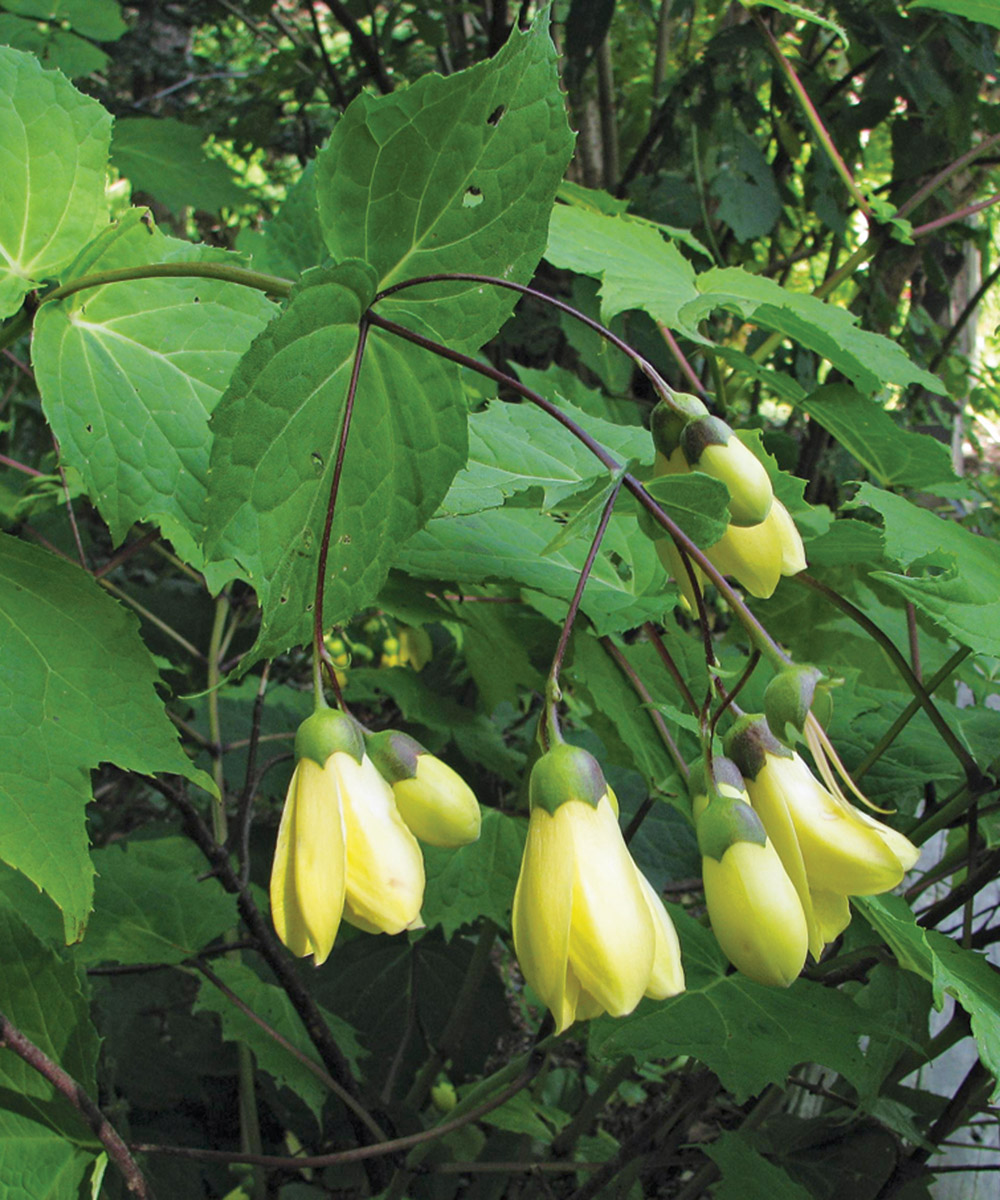
Name: Kirengeshoma palmata
Zones: 5 to 8
Size: 3 to 4 feet tall, 4 feet wide
Conditions: Full to partial shade; rich soil high in organic matter
This Japanese native has an upright growth habit; large, maplelike leaves; and wonderful fall flowers. The leaves make a nice shape echo when it is planted under maple trees. We’ve seen this plant used well in large masses, but it usually is grown as a specimen for the shade. It does well with a slightly protected site. In our New Hampshire garden, yellow wax-bells bloom in September and October. The nodding flowers are bell-shaped, and the petals are very thick, waxy, and come out in a sort of whorl. After the petals drop, the fruit puts on a show of its own. Sometimes called “the Stephen King fruit”, it has three weird horns coming from it, giving it a horror-show feel, but not too scary.
4. ‘Bronze Form’ Rodgersia
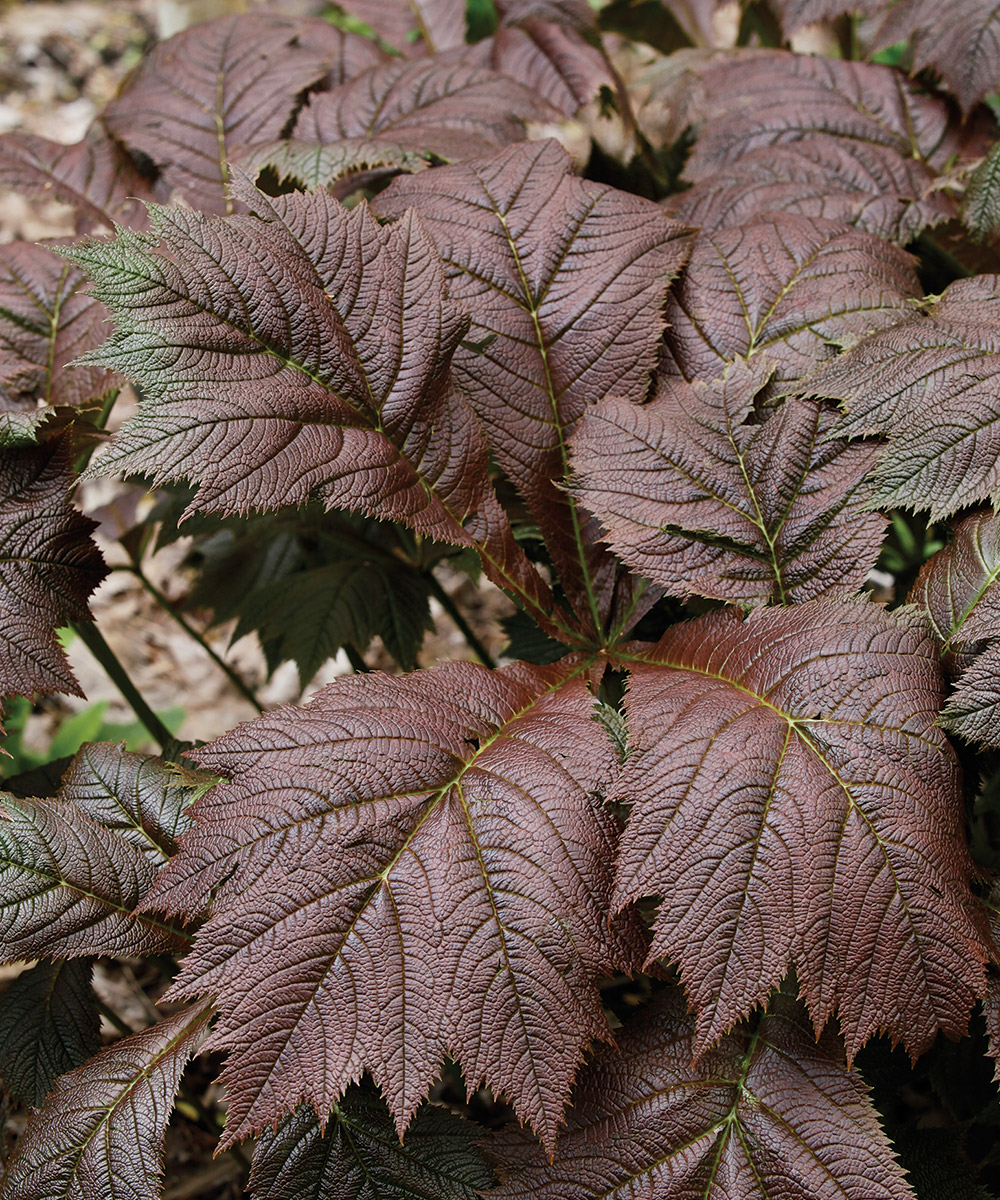
Name: Rodgersia podophylla ‘Bronze Form’
Zones: 4 to 8
Size: 3 to 4 feet tall, 3 to 5 feet wide
Conditions: Full to partial shade; rich, moist soil
We have grown Rodgersia podophylla for years. There are many species of Rodgersia; they can be hard to tell apart, and they will interbreed. A few years ago, we got the cultivar ‘Bronze Form’. What a beauty. In spring, when the foliage is emerging, it is a rich purple. As the season progresses, the huge (over 1 foot across) deeply palmate leaves have a tropical feel. They green out a bit but hold their distinct purple hue. This plant can fill large spaces, but it is not invasive, just mounding. Like many bold-leaved plants, it needs a lot of moisture. This species is from Korea and the Island of Hanshu in Japan. The summer flowers are astilbe-like panicles that hover attractively over the foliage.
Peter van Berkum and his wife, Leslie, own Van Berkum Nursery, a whole-sale grower in Deerfield, New Hampshire.
Fine Gardening Recommended Products

ARS Telescoping Long Reach Pruner
Fine Gardening receives a commission for items purchased through links on this site, including Amazon Associates and other affiliate advertising programs.

Pruning Simplified: A Step-by-Step Guide to 50 Popular Trees and Shrubs
Fine Gardening receives a commission for items purchased through links on this site, including Amazon Associates and other affiliate advertising programs.

The Nature of Oaks: The Rich Ecology of Our Most Essential Native Trees
Fine Gardening receives a commission for items purchased through links on this site, including Amazon Associates and other affiliate advertising programs.

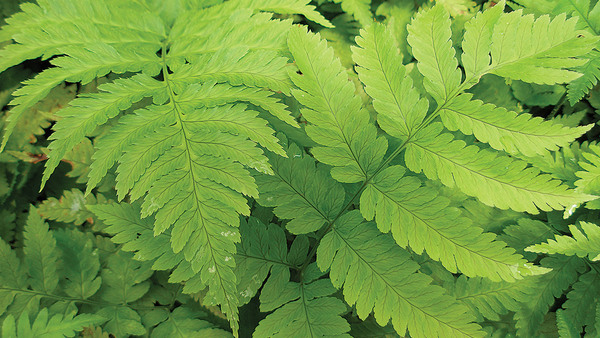

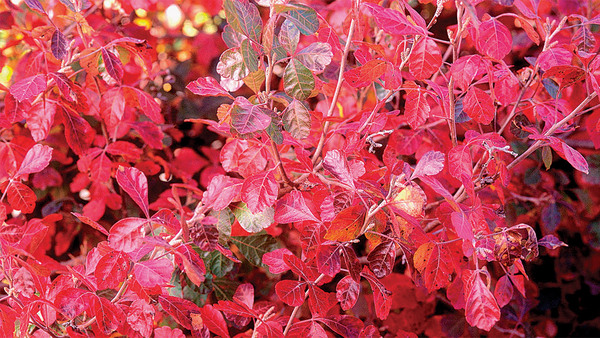
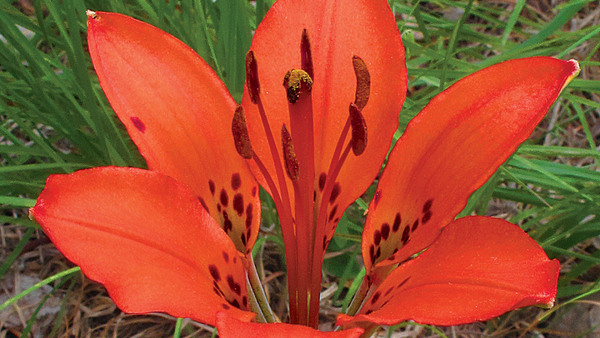













Comments
Log in or create an account to post a comment.
Sign up Log in